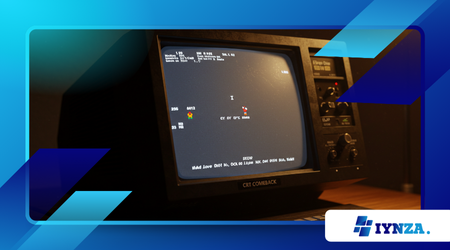The CRT Comeback: Why Gamers Are Rebuilding Old Setups in 2025

In 2025, you’d think everyone would be chasing the latest OLED or mini-LED panel. But a growing number of gamers are doing the opposite. They’re scouring online marketplaces, flea markets, and even scrapyards for one thing: a functioning CRT monitor.
Anúncios
The trend, dubbed The CRT Comeback, isn’t just a hipster revival of outdated tech. It’s a practical response to a problem modern displays haven’t solved.
For retro gamers, CRTs are the only way to experience classic consoles like the SNES, Sega Saturn, or PS2 in their true form. These systems were designed with CRTs in mind. Their games often look worse—or outright broken—on modern screens.
Input lag, stretched pixels, and motion blur can completely change how a game feels. A CRT solves all of that. The image is sharp in motion, the colors are deep, and most importantly, there’s no latency.
But nostalgia is only half the story. Competitive players, especially in fighting games and rhythm-based genres, are rediscovering CRTs for performance.
A well-maintained Sony PVM or even a classic Trinitron still offers better responsiveness than many modern “gaming monitors.” For games where a few milliseconds matter, CRTs still win.
So The CRT Comeback is real—and it’s rooted in both heart and hardware.
CRTs Offer Zero Input Lag—and That Still Matters
For gamers who care about precision, The CRT Comeback makes total sense. A standard LCD or LED monitor introduces input lag, even if it’s just a few milliseconds.
Add post-processing, adaptive sync, or poor upscaling, and that lag can increase without you even realizing it. On a CRT? There’s none of that. The signal goes straight to screen.
This matters more than people admit. In competitive titles like Street Fighter III: Third Strike or Dance Dance Revolution, rhythm and reaction define performance.
CRTs allow these games to be played the way they were meant to be. Even emulated versions on modern setups introduce delays that break the rhythm.
And the difference isn’t just measurable—it’s feelable. Players often describe a kind of “weight” or “float” in modern screens that CRTs don’t have.
Movements on CRTs feel crisp. You press jump, and it just happens. There’s no waiting for the screen to catch up.
This responsiveness builds muscle memory more accurately. It trains your timing without distortion. That’s why speedrunners, rhythm gamers, and fighting game purists are at the forefront of The CRT Comeback. They’re not chasing nostalgia. They’re chasing perfection.
Read also: Hidden Gems: Underrated Indie Games That Deserve Your Attentions
The Visual Appeal of Scanlines and Analog Warmth
The graphics of retro games weren’t designed to look clean—they were meant to blend. Developers in the 80s and 90s built sprites with CRT scanlines in mind.
These displays added natural smoothing, made pixels glow, and blended edges in a way that looked better than the raw pixel-perfect emulation we often see now.
That’s why old games can feel strangely harsh on a modern flat panel. Without scanlines and analog blur, characters look blocky, colors seem too flat, and animations lose fluidity. A CRT doesn’t just show the game—it completes it.
The analog warmth of CRT displays is also part of the magic. There’s a softness and motion fluidity that even the highest refresh-rate LCDs can’t replicate. It’s not about resolution—it’s about rendering. CRTs render movement continuously rather than in frames, so motion feels smooth in a way LCDs still struggle to match.
Many players rediscovering this for the first time describe it as a revelation. They’re seeing the game the way it was meant to be seen. And they don’t want to go back.
That aesthetic depth is one of the core reasons The CRT Comeback isn’t just about hardware—it’s about visual identity.
Preservation and Authenticity in Gaming Culture
In the growing world of game preservation, The CRT Comeback represents more than just a display choice—it’s a cultural stance.
Retro gaming isn’t just about owning a cartridge. It’s about experiencing the original software with the original hardware in the original format. For collectors, archivists, and enthusiasts, authenticity matters.
You can emulate Super Metroid on a PC. But playing it on a CRT using an original SNES and controller? That’s different. That’s preservation in action. It honors the game’s intended look, sound, and feel. It respects the past not as a museum piece, but as a living medium.
There’s also a technical reason preservationists love CRTs: compatibility. Many older consoles output analog video signals like composite, S-video, or RGB SCART—formats most modern TVs can’t process without laggy converters. CRTs accept those inputs natively. They were built for them.
That makes CRTs essential tools in preserving the integrity of gaming’s history. As we digitize more and more, The CRT Comeback ensures that the analog soul of classic gaming isn’t lost along the way.
The Growing Online Communities Behind the Comeback
Reddit threads, Discord servers, and YouTube channels are filled with guides on CRT restoration, modding, and repair. Gamers are learning how to degauss, replace flyback transformers, and even mod CRTs with HDMI input or PVM-level image quality.
Some creators are building entire home arcades centered around restored CRTs. Others are importing professional broadcast monitors from Japan. It’s become a hobby in itself—part engineering, part gaming, part art.
And as demand grows, prices have followed. What once cost $10 at a thrift store now goes for hundreds online. But many in the scene are happy to pay. To them, a CRT isn’t outdated—it’s elite.
This is the heart of The CRT Comeback: it’s a movement powered by passion. People aren’t doing this because they have to. They’re doing it because they want to—because they believe something valuable was lost in the race for newer, thinner, and flatter screens.
FAQ: The CRT Comeback
Why are CRTs better for retro games?
Because they were designed for analog output. CRTs display older games in their intended resolution and aspect ratio, with zero input lag and perfect pixel blending.
Are CRTs still being manufactured?
No. Production stopped over a decade ago. All CRTs in use today are refurbished, second-hand, or preserved by enthusiasts.
Is it hard to find a good CRT today?
It’s getting harder. Prices have risen, especially for high-end models like Sony PVMs or BVMs. But they’re still available through local classifieds, recycling centers, and retro gaming communities.
Can you connect modern consoles to a CRT?
Yes, but it requires adapters or downscalers. Most people use CRTs specifically with older consoles or PCs with analog output.
Are CRTs dangerous or unhealthy to use?
As long as they’re in good condition, they’re safe. But repairs should be done carefully—CRT internals can hold high voltage even when unplugged.
